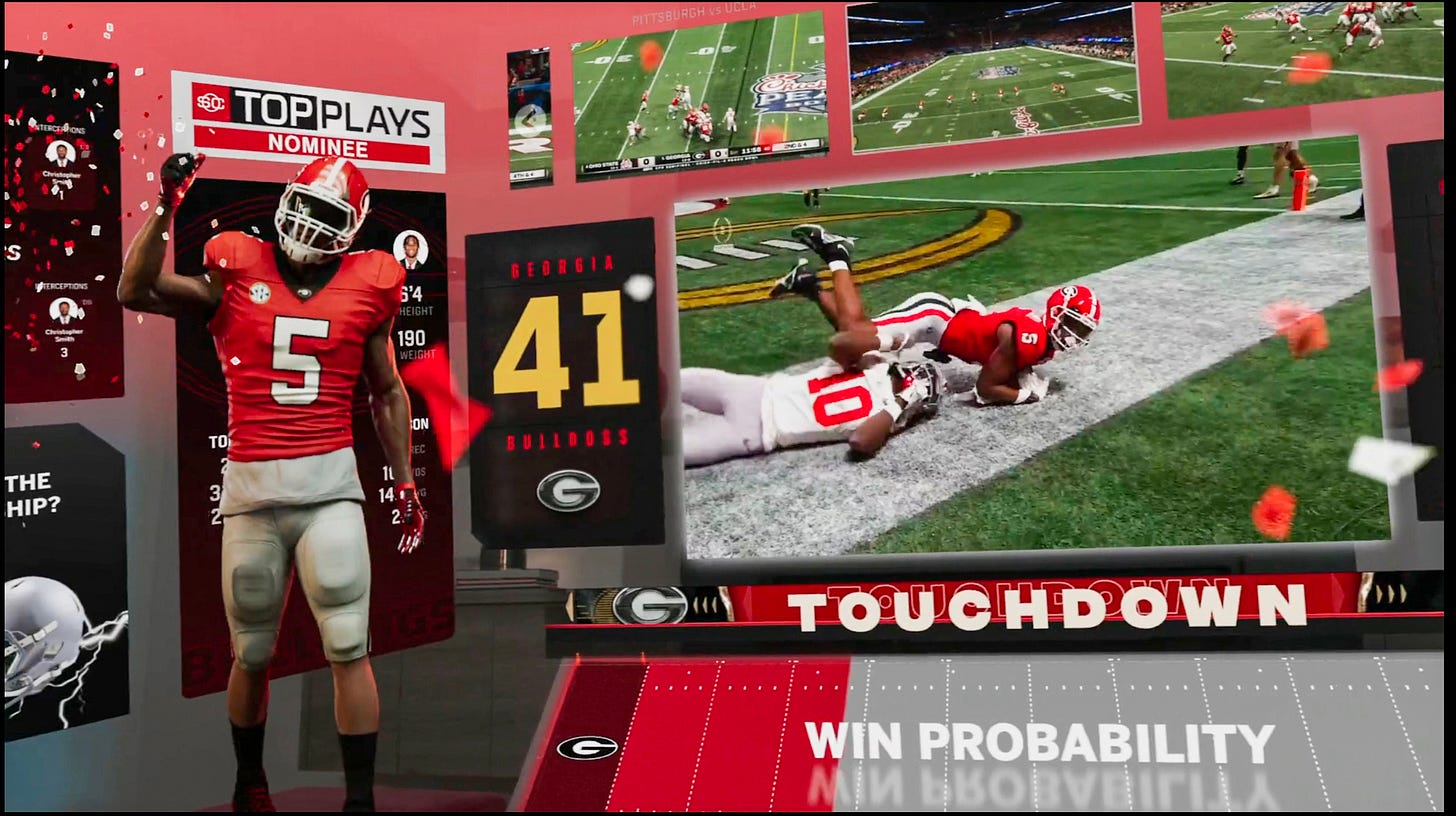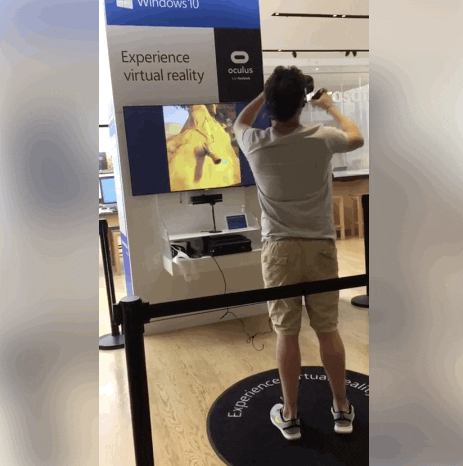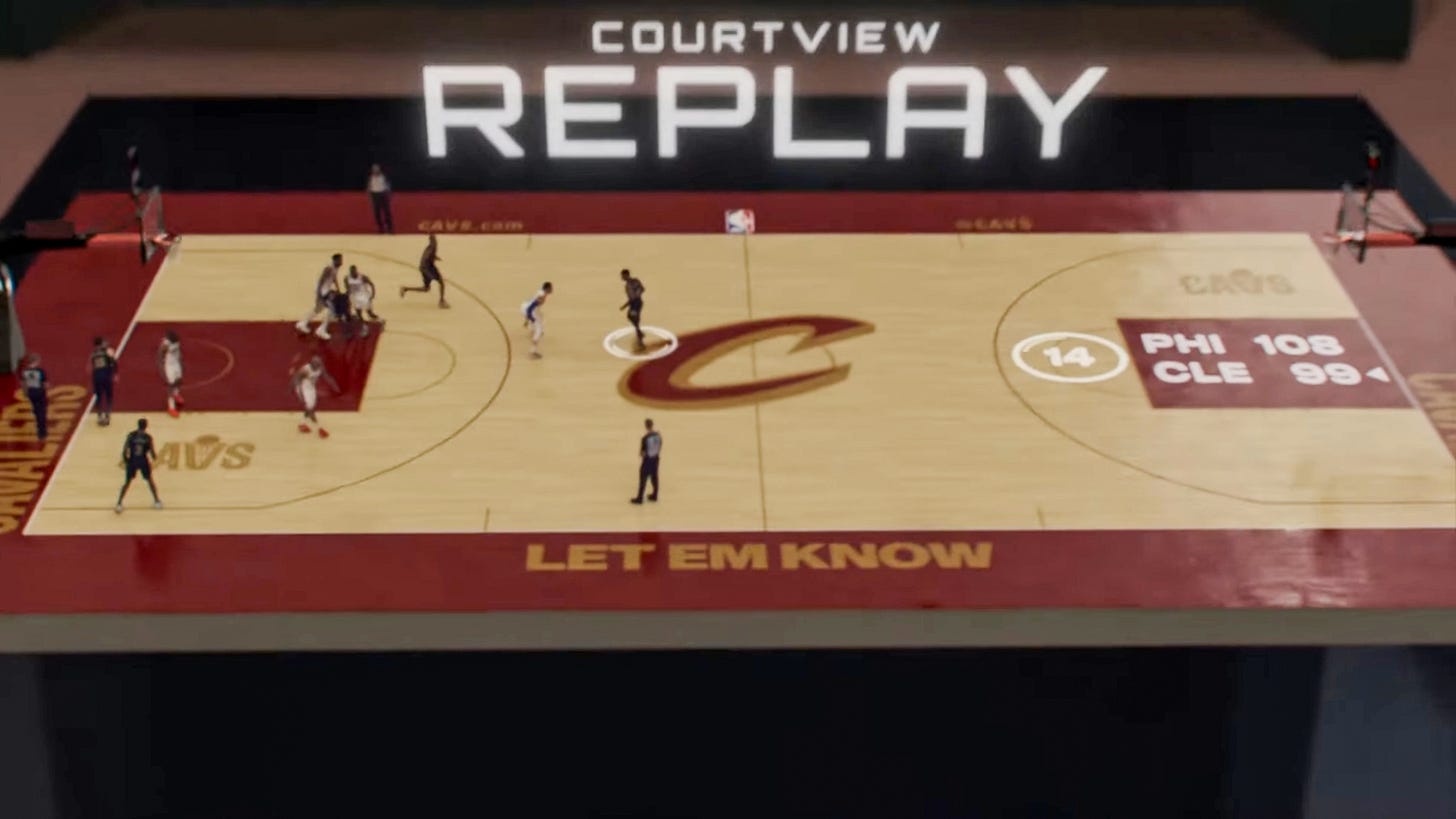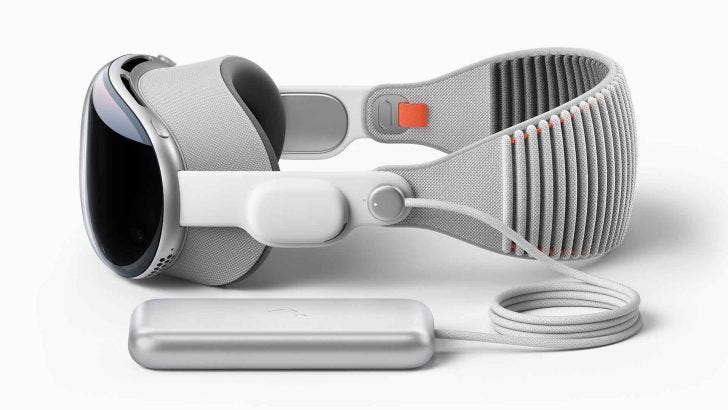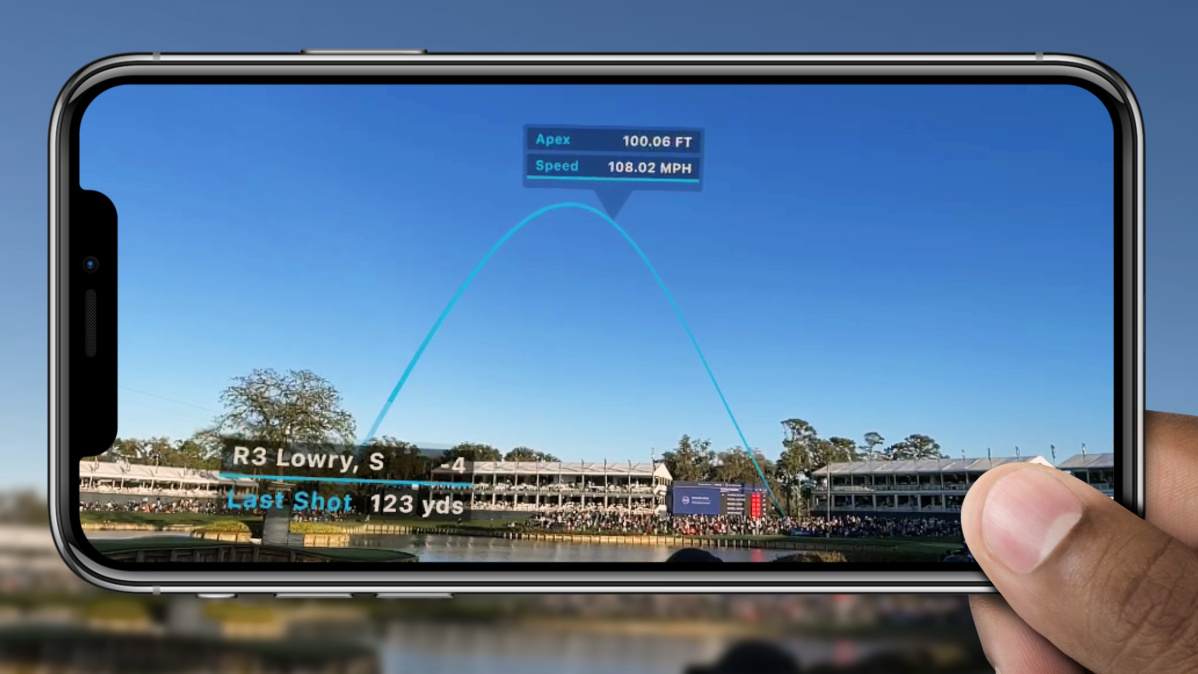Let's get "phygital". Or why Apple may have finally cracked VR/AR in sports.
Sports technology industry insights, news, and analysis. Brought to you by STWS.
Welcome back to Sports Tech Feed! Following Apple’s launch of Vision Pro, we break down why the new XR/VR/MR headset could be a game changer for how we consume and experience sports. We also look at the merger of LIV Golf and PGA Tour with a focus on the tech innovations recently introduced by both tours.
STWS is proud to announce the launch of the Sports Innovation Summit. A new one-day industry-exclusive event for professionals in the US sports industry.
Hosted at Nissan Stadium, home of the Tennessee Titans, on July 12th, 2023, the Summit provides attendees with meaningful insights and connections to drive tangible business outcomes in their organization.
The inaugural Sports Innovation Summit is launching in 2023 as part of the 9th annual MLC CONNECT Sports Creative Community Conference, a gathering of creative minds and artists from the pro sports industry, and in partnership between STWS and HTX Sports Tech.
Secure your Early Bird Tickets and learn more here.
Apple hitting “Reality” with a bang.
At the 2023 Worldwide Developers Conference (WWDC) early this week, Apple unveiled their long-awaited Extended Reality (XR) headset, the Apple Vision Pro, which will be available next year for the pretty penny of $3,499.
What even is reality?
Before we dive into what Vision Pro means for sports, a quick refresher on definitions:
Augmented Reality (AR): Enhances a user’s view of the real world by overlaying what we see with computer-generated information.
Virtual Reality (VR): Completely replaces a user’s view, immersing them within a virtual environment.
Mixed Reality (MR): Sits somewhere between AR and VR as it merges the real and virtual worlds (e.g. Pokémon Go).
Extended Reality (XR): A catch-all term for the integration of all of the above.
The Vision Pro device is an XR headset as it allows users to switch between VR, in which one is fully immersed in the Vision Pro’s displays, and AR*, which allows the user to see displays overlaid on the world around them.
(*Technically it’s look-through VR rather than pure AR, as you’re still looking through a screen, but that’s a technical qualification/footnote not relevant to the user experience.)
Immersion, to a point.
This latter feature is a key differentiator for the Apple product. Unlike its VR competitors (e.g. Meta’s Quest), the Vision Pro allows the user to switch in and out of full immersion. Meaning the headset is able to be used more seamlessly with everyday tasks, whilst still interacting with the world around you.
At a basic level, you can see the world around you whilst those you’re interacting with can still see your eyes. This is via the "EyeSight" feature which projects video graphics of your eyes onto the external screen.
It might seem like a basic feature but has huge implications for the potential use cases, and hopefully for user adoption.
What else is exciting about the Vision Pro?
Apple is selling the product as a “Spatial Computer” with its own in-built M2 and R1 chips and dedicated operating system, Vision OS.
The “spatial computer” line may be a decent helping of marketing spin (the phrase was mentioned 31 times in the launch) but the dual chip gives it the processing power of a laptop computer rather than most headsets which are as powerful as supercharged smartphones.
The dedicated VisionOS, built off the existing Apple iOS, will also help users feel instantly familiar with the operation of the headset and leverages the vast Apple ecosystem of App Store developers.
What does it mean for sports?
Sports will continue to be a natural proving ground for any technology, software or hardware, trying to showcase its capabilities in this brave new world.
The sports use cases demonstrated at the launch by Disney CEO, Bob Iger, are breathtaking and the closest thing we’ve seen to something that truly bridges the divide between physical and digital experiences.
Phyigital. Crossing the physical/digital divide.
As we discussed on the podcast with Jean-Baptiste Alliot (Advisor, UEFA Innovation Hub & Chief Strategy Officer, La Source) the holy grail of the fan experience is bringing the best of the stadium experience (e.g. unique immersive atmosphere) into the viewer’s home and the best of the home experience (e.g. convenience and comfort) into the stadium.
Advances in frictionless tech (e.g. biometric ticketing and payments) and in-stadium AR (e.g. existing phone apps like those seen at the FIFA Men’s World Cup) mean that the in-person stadium experience is arguably closer to realizing that point.
The Vision Pro could be the tool that flicks it back in favor of the in-home experience. But, and it’s a big one, is whether sports leagues and their broadcasters have any interest in producing content catered to this device.
Considering Bob Iger delivered the launch it indicates that there’s strong interest from ESPN in being a part of applications for sports.
Apple also has its own Major League Soccer (MLS) rights to leverage. With this week’s other big sports biz news story of Lionel Messi’s move to Inter Miami CF, these rights have also become quite a bit more appealing/valuable to a global audience.
It takes a (tech) village.
Although some of the applications shown at the launch are still conceptual, there’s an ecosystem of technology companies working towards making them a reality (pun intended).
Apart from the officially announced partners in Unity, Adobe, Cisco and Microsoft, here are some other companies poised to create and support Vision Pro apps in sports:
The Famous Group: Well known for powering AR broadcast experiences for the NFL, including the Super Bowl and Nickelodeon Slimetime.
Condense Reality: Captures and live streams real-world events into 3D virtual spaces.
Rezzil: AR/VR sports performance training.
Move.AI: AAA quality marker-less motion capture powered by AI.
Reality Bites 1: The hardware is very pricey. But this will change.
At $3,500 per headset, the price point is well beyond mass adoption. As with any hardware, subsequent product generations will benefit from reduced costs which can be passed on to the consumer.
Some chatter online is noting that this is the Vision Pro (emphasis added) which indicates that, in line with other Apple products, it will be accompanied by a cheaper, basic version. However, Apple hasn’t released anything official on this.
Reality Bites 2: The battery life is terrible. But this could change.
In an effort to reduce the weight of the headset, the battery pack is an external device about the size of an iPhone connected via cable.
At only two hours, the current battery life isn’t useful for any of the demonstrated capabilities (e.g. experiencing a sporting event or watching a feature-length movie).
Reality Bites 3: The hardware is still ugly. But this won’t change.
Regardless of how many generations are developed, the look probably won’t win any fashion awards. The ugly and unnatural nature of XR/MR headsets has always been an issue for their mass adoption.
e.g. Some sample headlines about Google’s ill-fated foray into AR glasses:
Slate: Why Did Google Make Such Ugly Glasses?
Marketing Week: The downfall of Google Glass is down to one thing - it was an ugly product that made anyone wearing it look stupid.
Wired: Glass represents everything we love to mock about Silicon Valley - a bunch of nerds making ugly products that nobody actually wants to use.
What does this mean for Meta? Nothing good tbh.
Zuckerberg has gone all in on the metaverse, but Apple could be the one to see it through. Meta has struggled with mass adoption of their VR product and Apple entering the market might prove the fatal blow for their hardware aspirations.
Is this a home run for VR’s mainstream adoption?
Close but not quite. It’s a cool glimpse into the future, but until the eye-watering cost comes down and they figure out the battery duration, it won’t crack the mainstream.
However the Vision Pro appears to be the closest anyone has gotten thus far and if anyone can make it work, it’s Apple. Feel free to share your take in the comments.
What We’re Reading: PGA Tour & LIV Golf Merge
In a shock move, the PGA Tour has agreed to merge with bitter rival, LIV Golf. Ending all pending litigation between them and closing the chapter on one of the most interesting case studies of sports disruption in recent history. Per CNBC:
The two entities signed an agreement that would combine the PGA Tour’s and LIV Golf’s commercial businesses and rights into a new, yet-to-be-named for-profit company. The agreement includes DP World Tour, also known as the European Tour.
Regardless of your views on the upstart golf league (and the funding behind it), it’s hard to argue against its positive effect on the pace and breadth of innovation in the sport.
On Sports Tech Feed, we’ve had senior execs from both the PGA Tour and LIV Golf sharing their perspectives on how each Tour has tackled digital innovation and tech. Listen below or by searching Sports Tech Feed on your podcast platform of choice.
Scott Gutterman (SVP, Digital Operations @ PGA TOUR)
James Watson (SVP, Worldwide Production @ LIV Golf)







